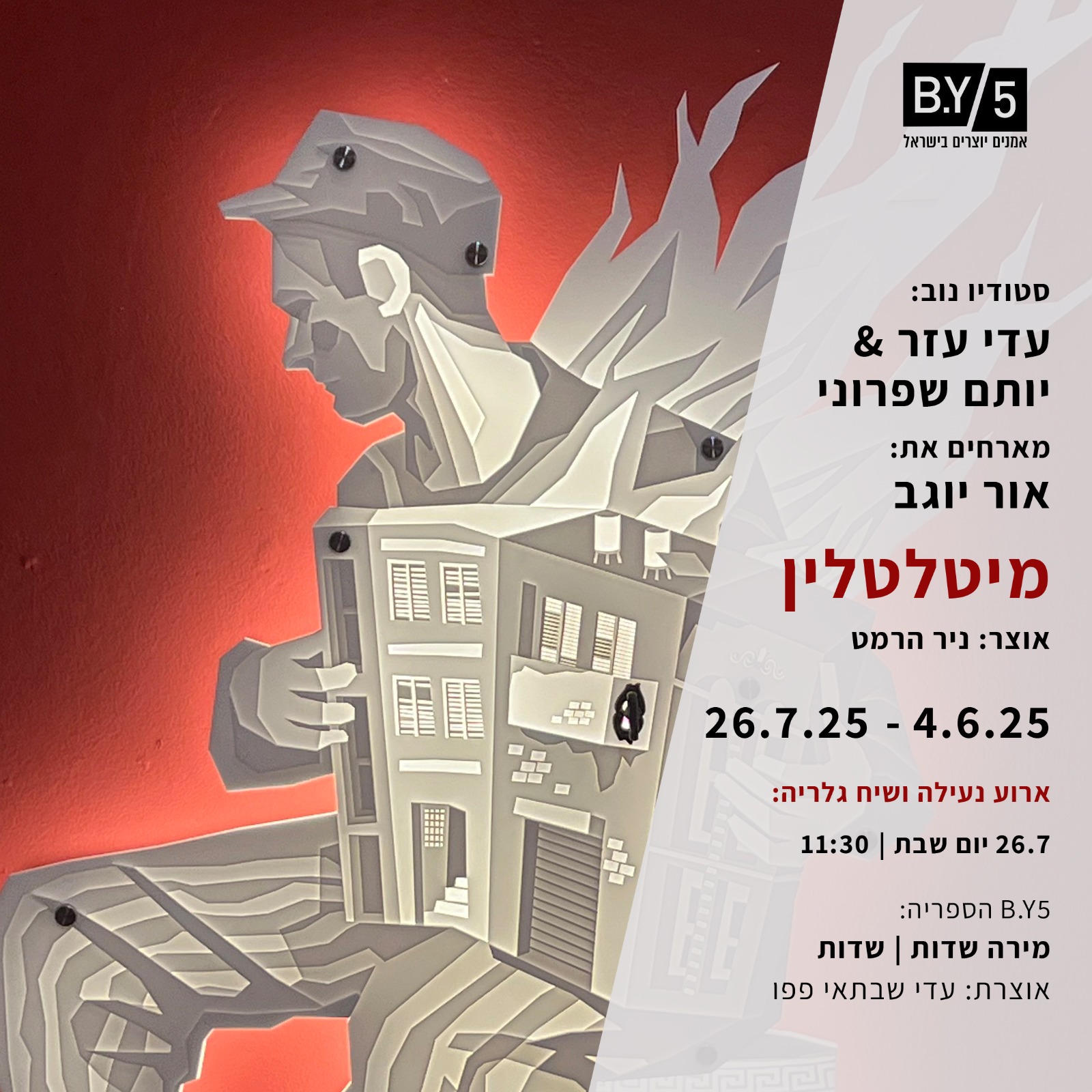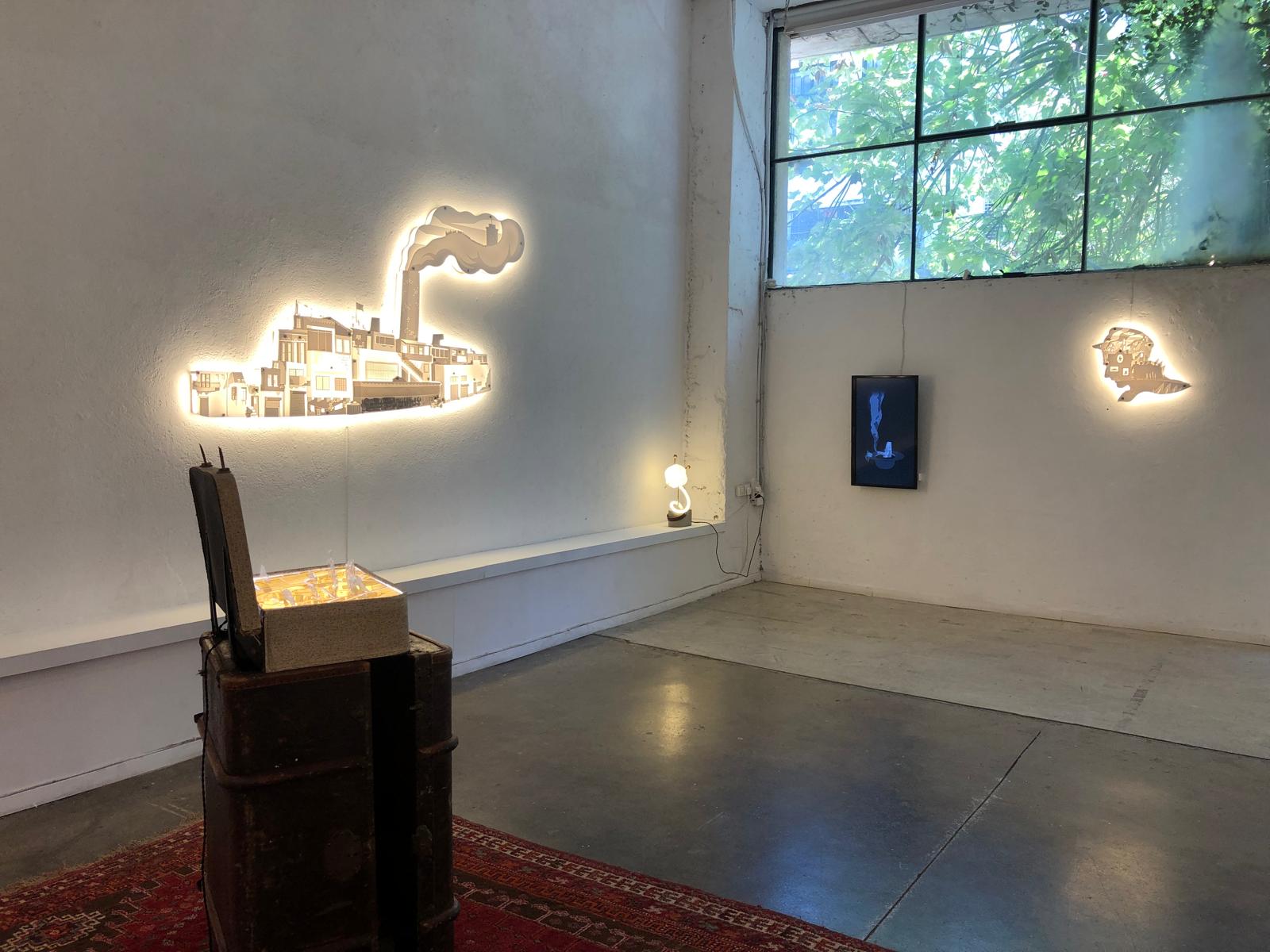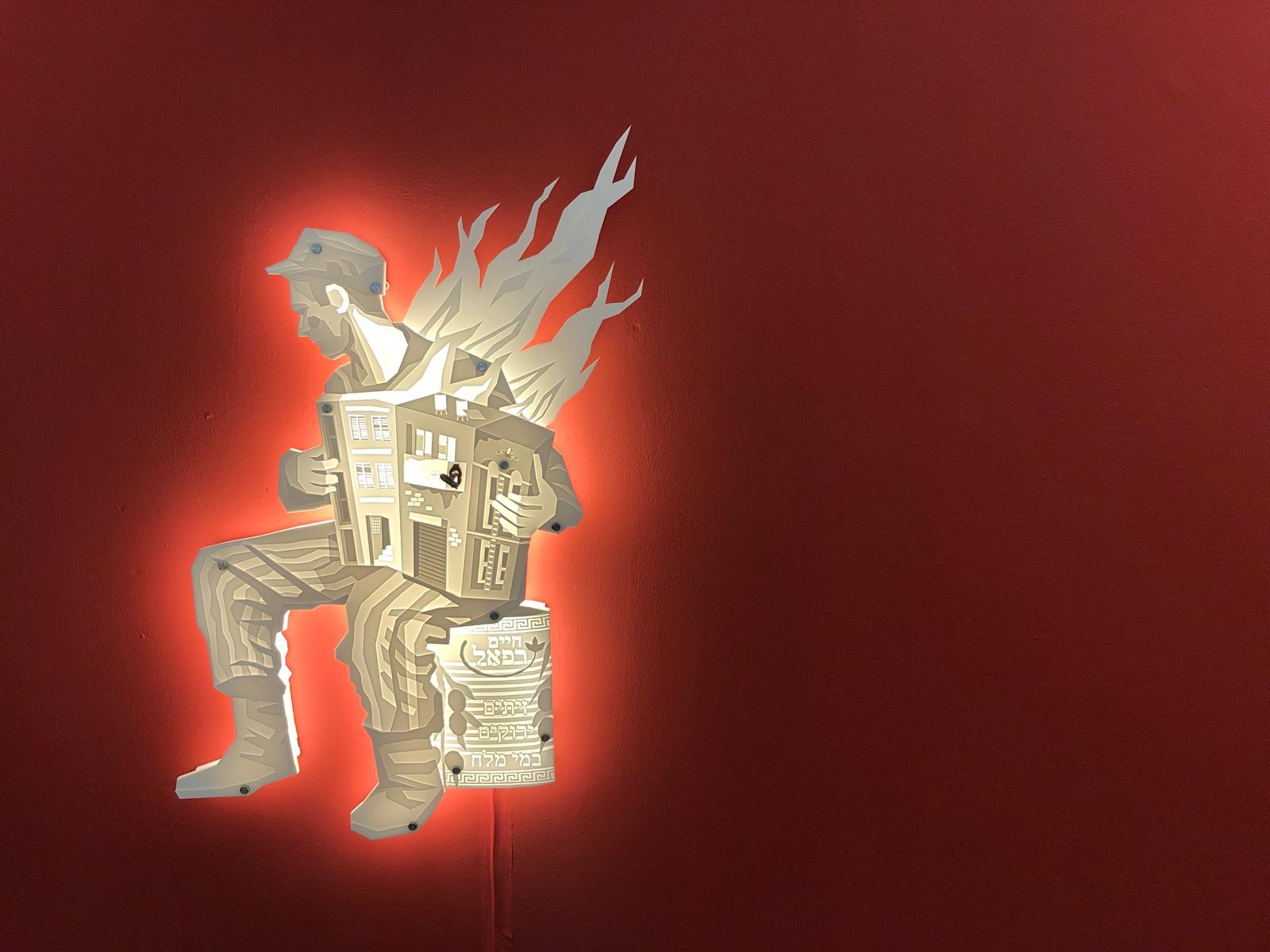Studio KNOB – Adi Azar & Yotam Shifroni
Movables
CuratorNir Harmat
There are objects that carry us with them, even when it seems we are the ones carrying them.
Movables—those transportable items that can be taken from place to place—become, in this exhibition, bridges: between times, between worlds, between people.
The exhibition explores questions of belonging and migration, and investigates how movement—both physical and emotional—interweaves identity, past, and future.
The works on view engage with states of movement—personal, cultural, and historical—and with the ways spiritual and emotional weight is absorbed into objects, into forms, and into light. Through the use of charged objects, reworked imagery, and visual references from art history, a language unfolds that seeks to bridge the material and the immaterial.
The body of work originated in wanderings through the Levinsky neighborhood in South Tel Aviv, an area with a significant concentration of descendants from the Salonican Jewish community. The process emerged through reading articles and historical texts, but just as crucially through conversations—with voices from the community’s distant past, as well as from its beating present. The work always began with place, with stories, with people. Only when contact was made with the ground and with the human voice did the magic begin: a pull inward was sparked, and the artists were drawn in—beginning to unravel, to question, and to reimagine what movables might be.
One of the core techniques in the exhibition involves building images from layers of white Perspex—semi-transparent sheets stacked atop one another. Through precise accumulation, an image is formed that holds both physical presence and an illusion of inner movement. The layers echo the workings of memory—not as a closed reservoir, but as a constant accumulation, where each new glance reveals another layer. Like the movables themselves, the image is shaped by instability, reliant on perspective and on light passing through it.
In the Israeli context, movement between places carries an ideologically charged vocabulary: between olim (Jewish immigrants) and migrants, between pioneering and survival. The exhibition offers a personal and critical reflection on these concepts—and on the tension between collective directive and individual story.
The tension between the limits of what one can carry—just a few objects, a handful of tangible memories—and the vast richness of what one carries within, is given here a layered, material expression. The internal light and imagery of the exhibition offer a viewing experience that hovers between the physical and the revelatory.
Studio KNOB seeks to think of memory not only as something that looks to the past, but as an act that unfolds in the present—through formal exploration, emotional assumptions, and ongoing engagement with questions of belonging, movement, and the fusion of past and future.
The works in the exhibition were created in collaboration with artist and illustrator Or Yogev, during which a trilogy of works was developed centered on the Levinsky neighborhood and the story of Chaim Raphael. A collaboration was also formed with Stav Havivi, animator and editor, who created the animated video work presented in the exhibition.



